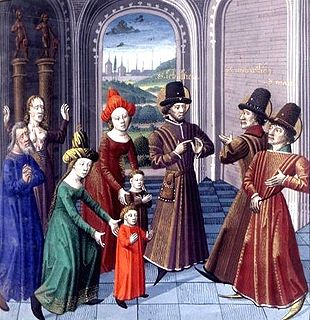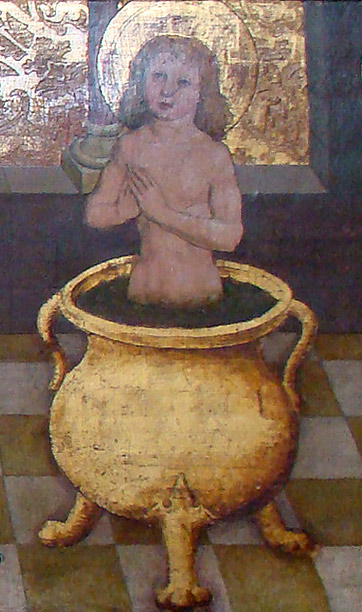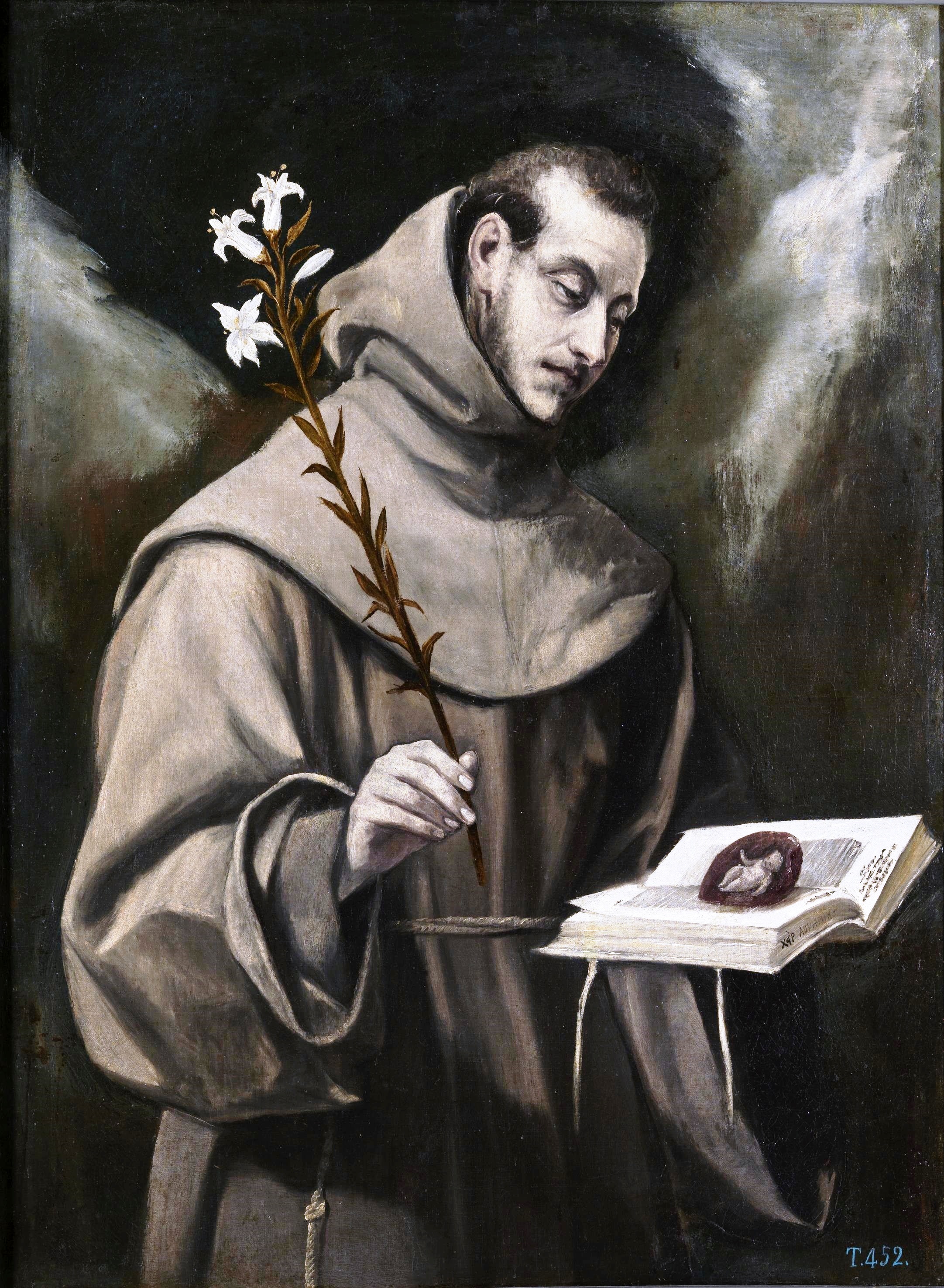
St Cyprian is an important saint for Benedictines, because St Benedict's Rule frequently alludes to his writings. His feast is celebrated on the same day as that of his friend Pope Cornelius, who was martyred in exile from Rome in 253 AD.
From the General Audience of Pope Benedict XVI on 6 June 2007:
Dear Brothers and Sisters,
In the series of our catecheses on the great figures of the ancient Church, today we come to an excellent African Bishop of the third century, St Cyprian, "the first Bishop in Africa to obtain the crown of martyrdom".
His fame, Pontius the Deacon his first biographer attests, is also linked to his literary corpus and pastoral activity during the 13 years between his conversion and his martyrdom (cf. Life and Passion of St Cyprian, 19, 1; 1, 1).
Cyprian was born in Carthage into a rich pagan family. After a dissipated youth, he converted to Christianity at the age of 35.
He himself often told of his spiritual journey, "When I was still lying in darkness and gloomy night", he wrote a few months after his Baptism, "I used to regard it as extremely difficult and demanding to do what God's mercy was suggesting to me. "I myself was held in bonds by the innumerable errors of my previous life, from which I did not believe I could possibly be delivered, so I was disposed to acquiesce in my clinging vices and to indulge my sins....
"But after that, by the help of the water of new birth, the stain of my former life was washed away, and a light from above, serene and pure, was infused into my reconciled heart... a second birth restored me to a new man. Then, in a wondrous manner every doubt began to fade.... I clearly understood that what had first lived within me, enslaved by the vices of the flesh, was earthly and that what, instead, the Holy Spirit had wrought within me was divine and heavenly" (Ad Donatum, 3-4).
Immediately after his conversion, despite envy and resistance, Cyprian was chosen for the priestly office and raised to the dignity of Bishop. In the brief period of his episcopacy he had to face the first two persecutions sanctioned by imperial decree: that of Decius (250) and that of Valerian (257-258).
After the particularly harsh persecution of Decius, the Bishop had to work strenuously to restore order to the Christian community. Indeed, many of the faithful had abjured or at any rate had not behaved correctly when put to the test. They were the so-called lapsi - that is, the "fallen" - who ardently desired to be readmitted to the community.
The debate on their readmission actually divided the Christians of Carthage into laxists and rigorists. These difficulties were compounded by a serious epidemic of the plague which swept through Africa and gave rise to anguished theological questions both within the community and in the confrontation with pagans. Lastly, the controversy between St Cyprian and Stephen, Bishop of Rome, concerning the validity of Baptism administered to pagans by heretical Christians, must not be forgotten.
In these truly difficult circumstances, Cyprian revealed his choice gifts of government: he was severe but not inflexible with the lapsi, granting them the possibility of forgiveness after exemplary repentance. Before Rome, he staunchly defended the healthy traditions of the African Church; he was deeply human and steeped with the most authentic Gospel spirit when he urged Christians to offer brotherly assistance to pagans during the plague; he knew how to maintain the proper balance when reminding the faithful - excessively afraid of losing their lives and their earthly possessions - that true life and true goods are not those of this world; he was implacable in combating corrupt morality and the sins that devastated moral life, especially avarice.
"Thus he spent his days", Pontius the Deacon tells at this point, "when at the bidding of the proconsul, the officer with his soldiers all of a sudden came unexpectedly upon him in his grounds" (Life and Passion of St Cyprian, 15, 1).
On that day, the holy Bishop was arrested and after being questioned briefly, courageously faced martyrdom in the midst of his people.
The numerous treatises and letters that Cyprian wrote were always connected with his pastoral ministry. Little inclined to theological speculation, he wrote above all for the edification of the community and to encourage the good conduct of the faithful.
Indeed, the Church was easily his favourite subject. Cyprian distinguished between the visible, hierarchical Church and the invisible mystical Church but forcefully affirmed that the Church is one, founded on Peter.
He never wearied of repeating that "if a man deserts the Chair of Peter upon whom the Church was built, does he think that he is in the Church?" (cf. De unit. [On the unity of the Catholic Church], 4).
Cyprian knew well that "outside the Church there is no salvation", and said so in strong words (Epistles 4, 4 and 73, 21); and he knew that "no one can have God as Father who does not have the Church as mother" (De unit., 6). An indispensable characteristic of the Church is unity, symbolized by Christ's seamless garment (ibid., 7): Cyprian said, this unity is founded on Peter (ibid., 4), and finds its perfect fulfilment in the Eucharist (Epistle 63, 13).
"God is one and Christ is one", Cyprian cautioned, "and his Church is one, and the faith is one, and the Christian people is joined into a substantial unity of body by the cement of concord. Unity cannot be severed. And what is one by its nature cannot be separated" (De unit., 23).
We have spoken of his thought on the Church but, lastly, let us not forget Cyprian's teaching on prayer. I am particularly fond of his treatise on the "Our Father", which has been a great help to me in understanding and reciting the Lord's Prayer better.
Cyprian teaches that it is precisely in the Lord's Prayer that the proper way to pray is presented to Christians. And he stresses that this prayer is in the plural in order that "the person who prays it might not pray for himself alone. Our prayer", he wrote, "is public and common; and when we pray, we pray not for one, but for the whole people, because we the whole people, are one (De Dom. orat. [Treatise on the Lord's Prayer], 8).
Thus, personal and liturgical prayer seem to be strongly bound. Their unity stems from the fact that they respond to the same Word of God. The Christian does not say "my Father" but "our Father", even in the secrecy of a closed room, because he knows that in every place, on every occasion, he is a member of one and the same Body.
"Therefore let us pray, beloved Brethren", the Bishop of Carthage wrote, "as God our Teacher has taught us. It is a trusting and intimate prayer to beseech God with his own word, to raise to his ears the prayer of Christ. Let the Father acknowledge the words of his Son when we pray, and let him also who dwells within our breast himself dwell in our voice....
"But let our speech and petition when we pray be under discipline, observing quietness and modesty. Let us consider that we are standing in God's sight. We must please the divine eyes both with the position of the body and with the measure of voice....
"Moreover, when we meet together with the brethren in one place, and celebrate divine sacrifices with God's priest, we ought to be mindful of modesty and discipline - not to throw abroad our prayers indiscriminately, with unsubdued voices, nor to cast to God with tumultuous wordiness a petition that ought to be commended to God by modesty; for God is the hearer, not of the voice, but of the heart (non vocis sed cordis auditor est)" (3-4). Today too, these words still apply and help us to celebrate the Holy Liturgy well.
Ultimately, Cyprian placed himself at the root of that fruitful theological and spiritual tradition which sees the "heart" as the privileged place for prayer.
Indeed, in accordance with the Bible and the Fathers, the heart is the intimate depths of man, the place in which God dwells. In it occurs the encounter in which God speaks to man, and man listens to God; man speaks to God and God listens to man. All this happens through one divine Word. In this very sense - re-echoing Cyprian - Smaragdus, Abbot of St Michael on the Meuse in the early years of the ninth century, attests that prayer "is the work of the heart, not of the lips, because God does not look at the words but at the heart of the person praying" (Diadema monachorum [Diadem of the monks], 1).
Dear friends, let us make our own this receptive heart and "understanding mind" of which the Bible (cf. I Kgs 3: 9) and the Fathers speak. How great is our need for it! Only then will we be able to experience fully that God is our Father and that the Church, the holy Bride of Christ, is truly our Mother.













